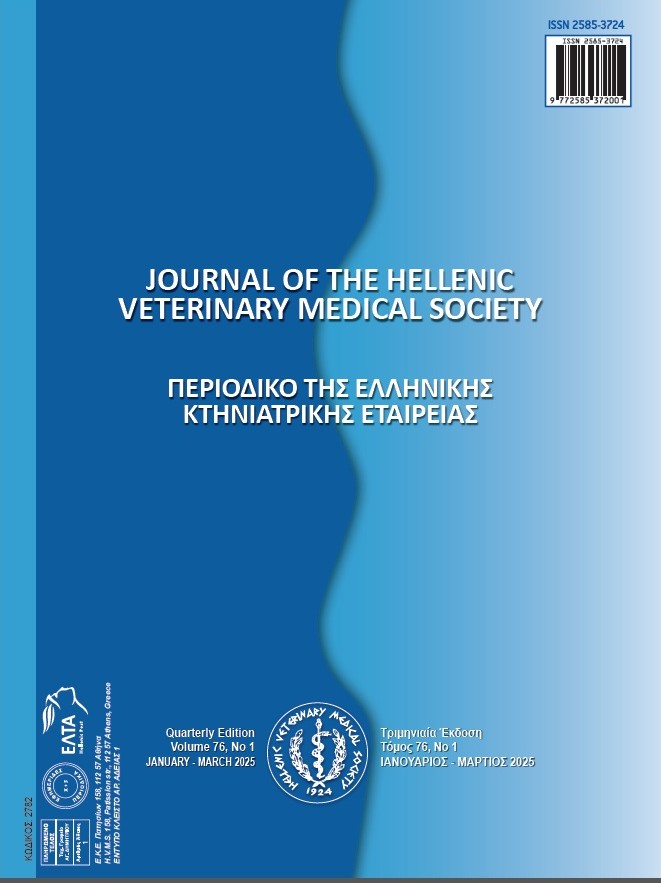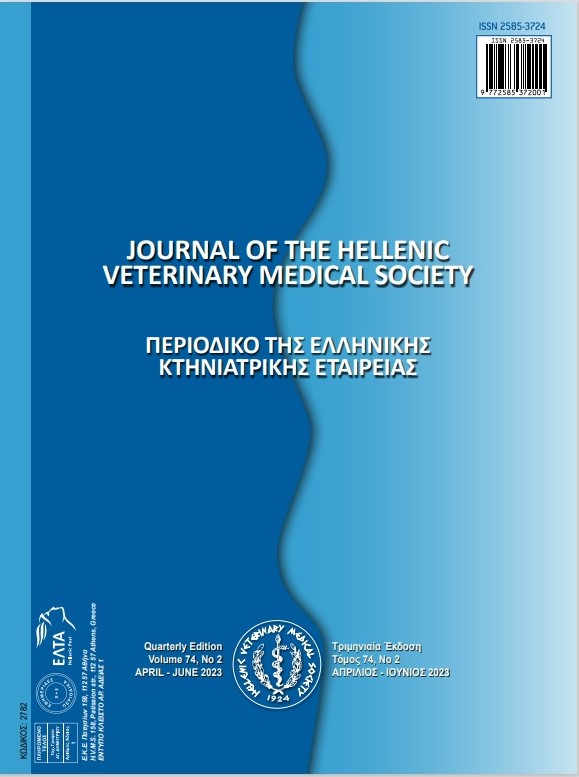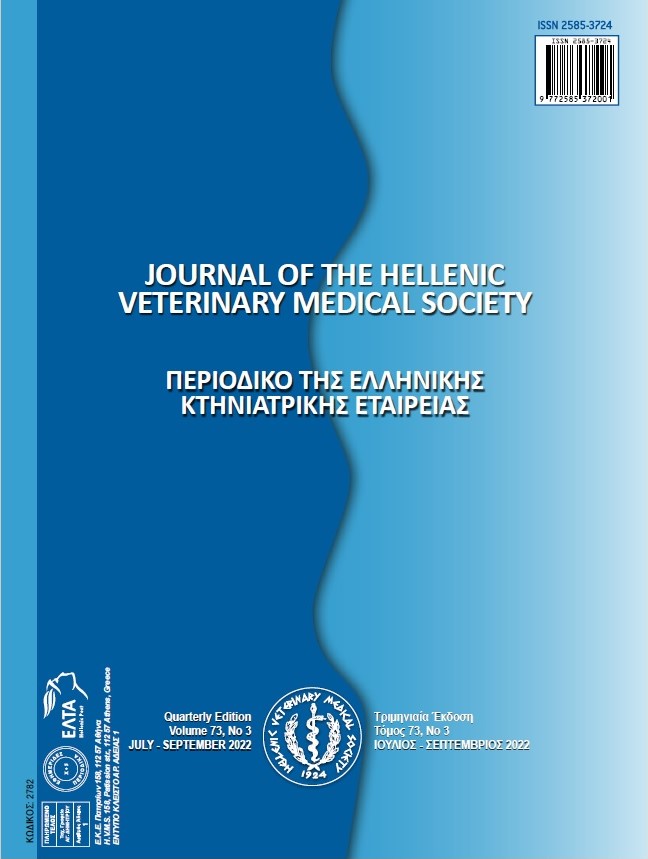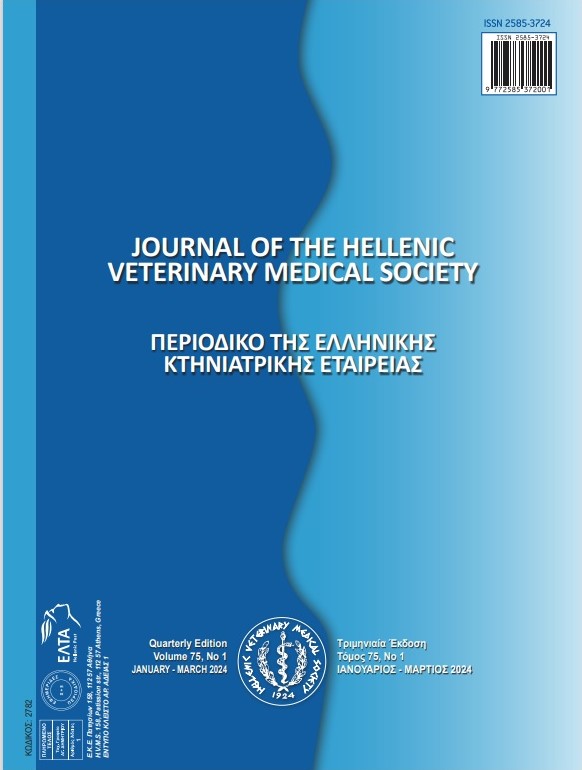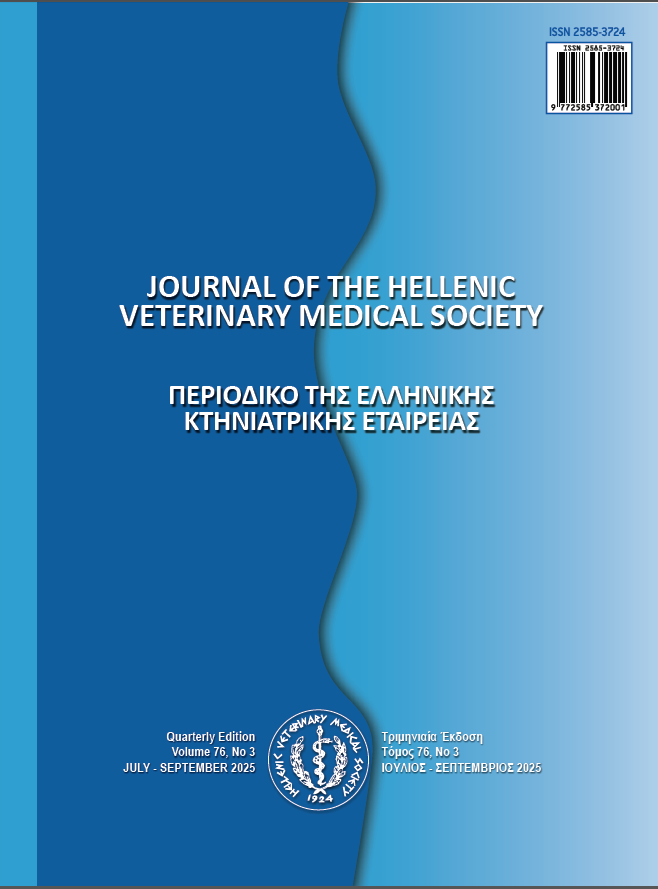A study to investigate the anti-methanogenic properties of black tea waste in dairy cows in order to achieve a cleaner environment
Περίληψη
In this study, the authors substituted alfalfa hay with factory black tea waste (FBTW) in dairy cattle total mixed ration (TMR) and subsequently tested its effects on in-vitro carbon dioxide and methane production, metabolizable energy (ME), organic matter digestibility (OMD), net energy lactation (NEL), microbial protein production (MP) and Daisy incubator digestibility parame-ters. Experimental diets included 0% (TW0), 25% (TW1), 50% (TW2) and 75% (TW3) FBTW sub-stituted alfalfa hay in dairy cattle TMR rations. Substitution of alfalfa hay with FBTW in TMR linearly decreased in-vitro GP, methane, ME, NEL and OMD values (P<0.05), and linearly in-creased true dry matter digestibility (TDMD), partition factor (PF) and microbial protein pro-duction efficiency (MPSE) values (p<0.05). Organic matter (IVOMD), in-vitro true dry matter (IVTDMD), and NDF digestibility (IVNDFD) values, determined in the Daisy II incubator, were decreased by substituting FBTW for alfalfa hay in TMR (p<0.05). Substitution of alfalfa hay by FBTW up to 50% in TMR as an alternative roughage source in ruminant animal nutrition can be beneficial yet in-vivo studies are required for a solid conclusion.
Λεπτομέρειες άρθρου
- Πώς να δημιουργήσετε Αναφορές
-
Kaya , A., Kaya , A., Palangi, V., Kaya , H., & Macit , M. (2025). A study to investigate the anti-methanogenic properties of black tea waste in dairy cows in order to achieve a cleaner environment. Περιοδικό της Ελληνικής Κτηνιατρικής Εταιρείας, 76(1), 8679–8688. https://doi.org/10.12681/jhvms.36889
- Τεύχος
- Τόμ. 76 Αρ. 1 (2025)
- Ενότητα
- Research Articles

Αυτή η εργασία είναι αδειοδοτημένη υπό το CC Αναφορά Δημιουργού – Μη Εμπορική Χρήση 4.0.
Οι συγγραφείς των άρθρων που δημοσιεύονται στο περιοδικό διατηρούν τα δικαιώματα πνευματικής ιδιοκτησίας επί των άρθρων τους, δίνοντας στο περιοδικό το δικαίωμα της πρώτης δημοσίευσης.
Άρθρα που δημοσιεύονται στο περιοδικό διατίθενται με άδεια Creative Commons 4.0 Non Commercial και σύμφωνα με την άδεια μπορούν να χρησιμοποιούνται ελεύθερα, με αναφορά στο/στη συγγραφέα και στην πρώτη δημοσίευση για μη κερδοσκοπικούς σκοπούς.
Οι συγγραφείς μπορούν να καταθέσουν το άρθρο σε ιδρυματικό ή άλλο αποθετήριο ή/και να το δημοσιεύσουν σε άλλη έκδοση, με υποχρεωτική την αναφορά πρώτης δημοσίευσης στο J Hellenic Vet Med Soc
Οι συγγραφείς ενθαρρύνονται να καταθέσουν σε αποθετήριο ή να δημοσιεύσουν την εργασία τους στο διαδίκτυο πριν ή κατά τη διαδικασία υποβολής και αξιολόγησής της.

